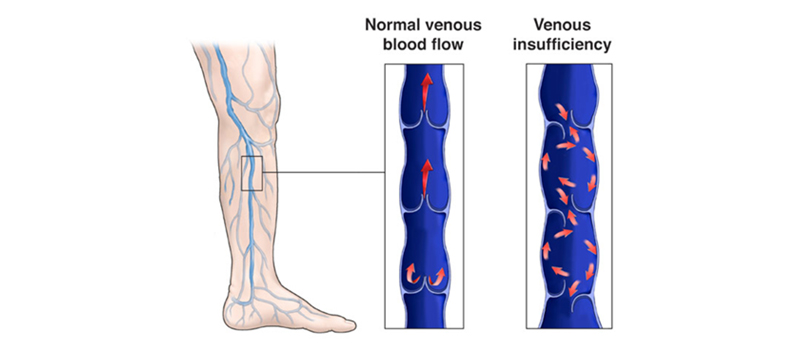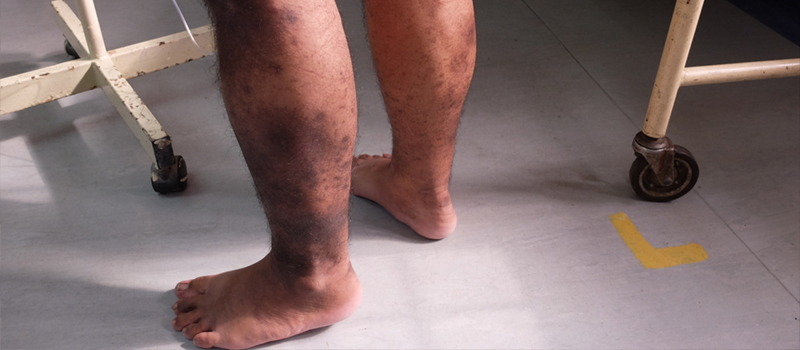Chronic Venous Insufficiency
In the human body, arteries carry blood from the heart to various body parts. Veins, on the other hand, are responsible for getting the blood back to the heart. This ever-continuing cycle ensures all body parts are replenished with enough oxygenated blood.

When pumping blood back to the heart, veins employ the use of valves to keep the blood from flowing backward. This creates a sort of one-way traffic where blood can freely move throughout the body.
In some cases, the veins are unable to send the blood from the limbs to the heart. This condition is known as venous insufficiency, and research shows it affects more than 40 % of the population.
When suffering from chronic venous insufficiency, your blood struggles to flow back to the heart.
This causes blood pooling in your leg’s veins.
What causes chronic venous insufficiency?
Admittedly, a lot more research is needed to understand chronic venous insufficiency (CVI) better.
From the existing data and analysis, it’s evident that deep vein thrombosis (blood clots) can significantly damage the valves responsible for blood flow back to the heart.
A lack of exercise has also been broadly linked to contributing to CVI. Coupled with little or no activity, standing or sitting for long without taking breaks also increase your chances of suffering from chronic venous insufficiency.
Research also shows women are more likely to get CVI as compared to men.
Other risk factors that can increase the chance of getting CVI include;
•Obesity
• Age – most CVI patients are aged 50 and above
• A history of deep vein thrombosis (blood clots)
• Lifestyle
• choices – such as smoking
• Familiar ties – someone in your family has a history of CVI
• Pregnancy and past pregnancies can also increase your chances of getting chronic venous insufficiency
If you suspect you may have CVI or fall into one of the above-mentioned categories, you should immediately seek medical advice. When caught early, proper curative and remedial measures can help you get back to top shape and health.
What are the symptoms of chronic venous insufficiency?
Some of the prevalent symptoms associated with CVI include;
• Excess swelling on the legs and ankles
• Pain when walking – that stops when you rest
• Various veins
• A tight feeling in the calves or painful and itchy legs
• Hard to treat leg ulcers
• Brown-colored skin patches near the ankles
• Muscle spasms and painful leg cramps (charley horse)
• Throbbing and aching accompanied by a feeling of heaviness in the legs

Is chronic venous insufficiency treatable?
While treatable, the proper remedy depends on various factors. Some of these conditions are your age, the specific symptoms, the condition’s severity, and your medication tolerability.
Compression stockings are among the most popular treatment options for CVI. These customized stockings apply pressure at the lower leg and ankle, thereby improving blood flow and circulation.
You don’t have to suffer from chronic venous insufficiency. With early detection and proper care, you
can now get the best treatment and alleviate CVI pain and other symptoms. Get the best CVI treatment today from Washington Vascular Specialists and go about your daily duties without the pain or discomfort.



